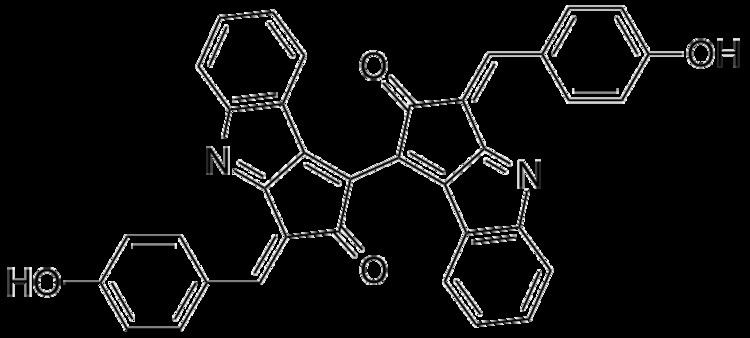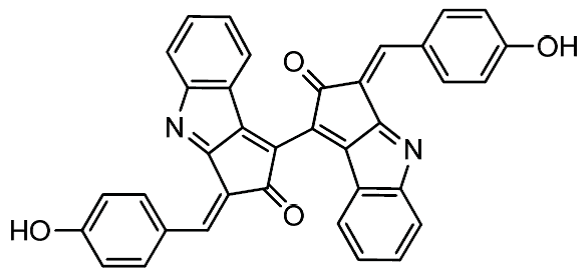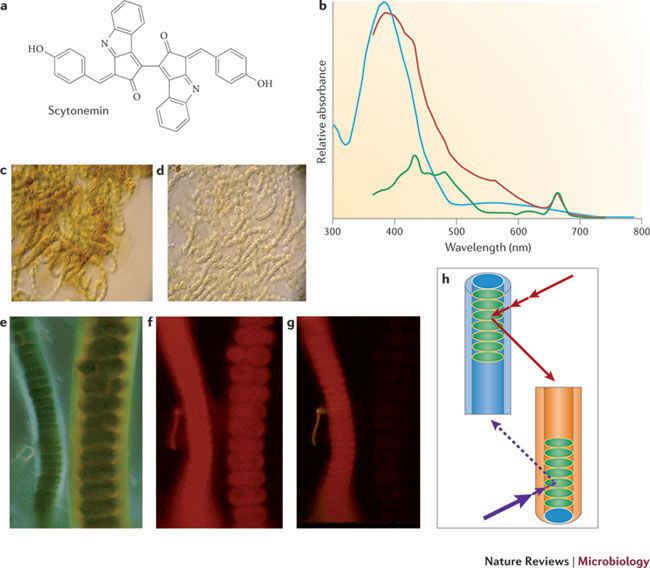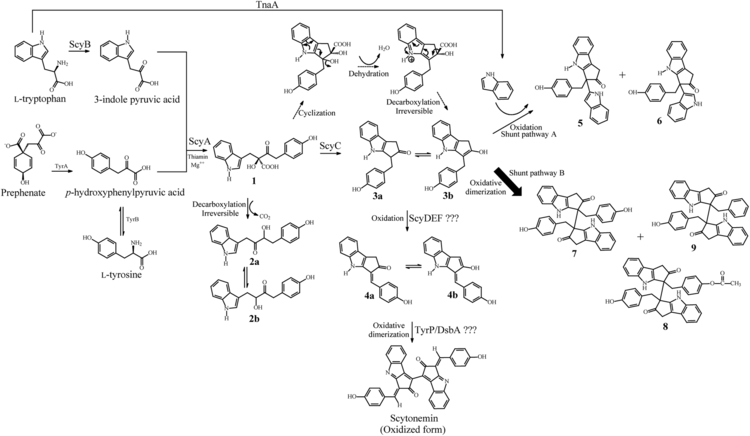Formula C36H20N2O4 Appearance brown solid | Molar mass 544.6 g/mol | |
 | ||
Scytonemin is a biological pigment synthesized by many strains of cyanobacteria, including Calothrix sp., Lyngbya aestuarii, and others. It was originally discovered in 1849, although the structure remained unsolved until 1993. Scytonemin is believed to act as a bacterial sunscreen with a broad absorption from 325-425 nm and a separate maxima at 250 nm, and its biosynthesis triggered by exposure to UV light.

Biosynthesis

The biosynthesis in Lyngbya aestuarii was recently explored by Balskus, Case, and Walsh. It proceeds by the conversion of L-tryptophan to 3-indole pyruvic acid, followed by coupling to p-hydroxyphenylpyruvic acid. Cyclization of the resultant β-ketoacid yields a tricyclic ketone. Oxidation and dimerization yields the completed natural product. Three scytonemin biosynthetic enzymes are necessary, denoted as ScyA-C.



